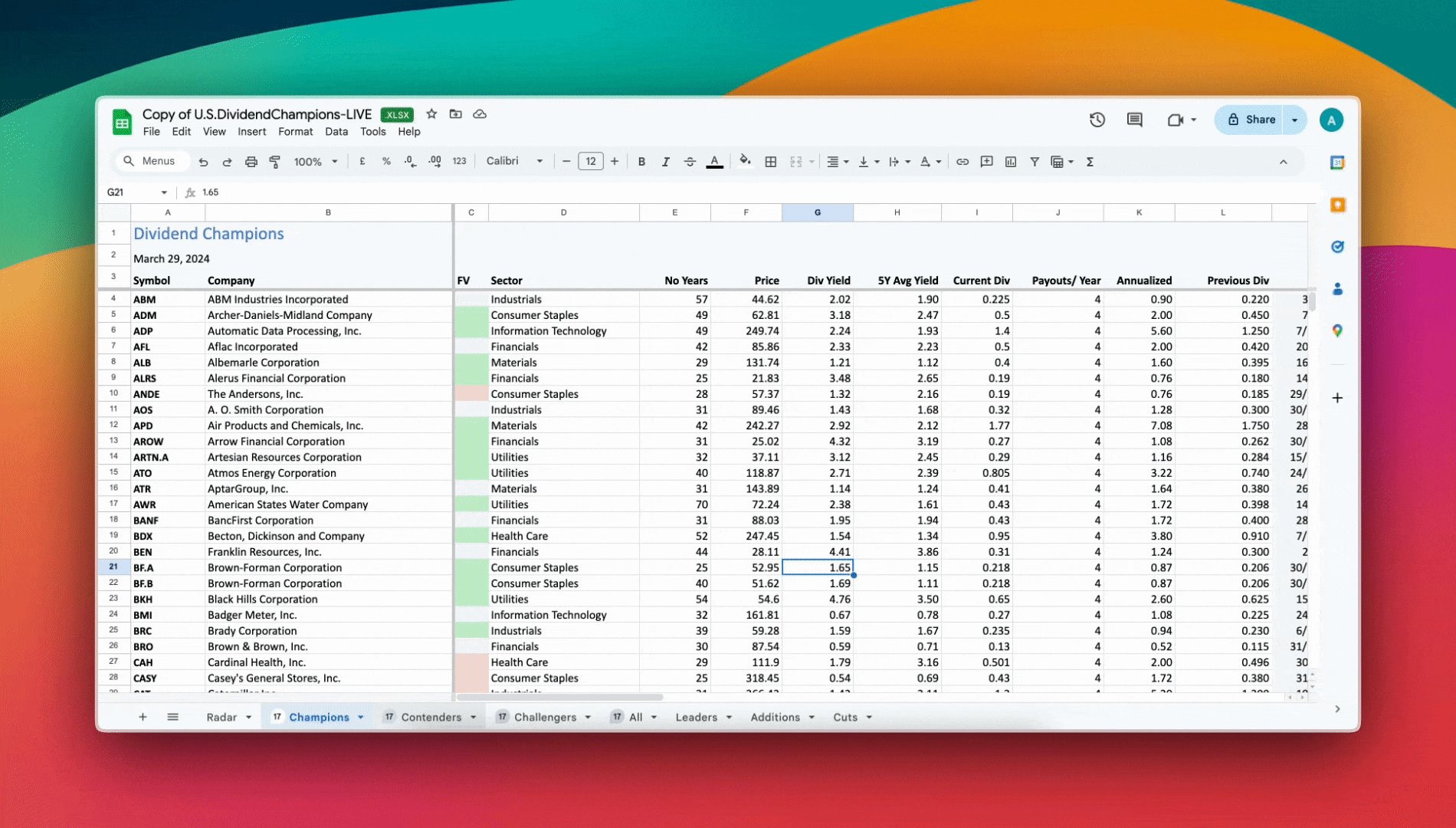Compound Interest Dividend Calculator
See how your money grows over time with compound interest.
This calculator shows you exactly how much your investments could grow, based on your starting amount, monthly contributions, interest rate, and compounding frequency.
Perfect for long-term investors, savers, or anyone curious about how compounding actually works.
Portfolio Growth Over Time
Year-by-Year Portfolio Growth (Compound Interest)
| Year | Annual Contributions | Interest Earned | Total Invested | Accrued Interest | End Balance |
|---|---|---|---|---|---|
| 1 | $1,200 | $433.74 | $11,200 | $433.74 | $11,634 |
| 2 | $1,200 | $500.30 | $12,400 | $934.03 | $13,334 |
| 3 | $1,200 | $569.57 | $13,600 | $1,503.60 | $15,104 |
| 4 | $1,200 | $641.66 | $14,800 | $2,145.27 | $16,945 |
| 5 | $1,200 | $716.70 | $16,000 | $2,861.96 | $18,862 |
| 6 | $1,200 | $794.79 | $17,200 | $3,656.75 | $20,857 |
| 7 | $1,200 | $876.06 | $18,400 | $4,532.81 | $22,933 |
| 8 | $1,200 | $960.64 | $19,600 | $5,493.44 | $25,093 |
| 9 | $1,200 | $1,048.67 | $20,800 | $6,542.11 | $27,342 |
| 10 | $1,200 | $1,140.28 | $22,000 | $7,682.39 | $29,682 |
How Our Compound Calculator Works
Here’s how our compound calculator works, what you can expect, and how it is different from other compound calculators online.
Real Contributions, Not Just One-Time Deposits
We let you include monthly contributions because in the real world, most people invest consistently, not just once.
Flexible Compounding Frequency
Choose from daily, monthly, yearly, or even a custom compounding schedule to model real-world scenarios based on your investment account.
Year-by-Year Breakdown (Not Just Final Numbers)
You’ll get a full table and chart showing exactly how your balance grows, what you contribute, and how much interest you earn every single year.
Compound interest explained
What Is Compound Interest?
Compound interest means you earn interest not just on your original investment, but also on the interest that’s already been added over time.
It’s like a snowball: small at first, but it grows faster the longer it rolls.
Let’s say you start with $10,000, add $100 every month, and earn a 4% annual return with monthly compounding.
In your first month, you’d earn about $33 in interest. The next month, interest is calculated on your new total, $10,133, plus your next $100 contribution. So your interest grows a little more. Month after month, this cycle continues, and the growth gradually accelerates.
After 1 year, you’d have around $11,634, that’s $1,200 in contributions and $434 in interest.
If you keep going for 10 years, your total investment would be $22,000, but your balance would be about $29,682, meaning you earned $7,682 just from interest.
That’s the power of compounding: small, steady contributions + time = major long-term growth.
The longer you stay invested, the more your money works for you.
Compound vs drip
How DRIP Investing Works (and Why It’s Even Better)
DRIP stands for Dividend Reinvestment Plan, and it’s like compound interest, but specifically for dividend-paying stocks.
Instead of taking your dividends as cash, you automatically reinvest them to buy more shares. Those new shares then earn dividends too. Over time, you build a growing snowball of ownership.
Let’s take a similar example:
You invest $10,000 into a stock that pays a 4% annual dividend, and you add $100 every month. Instead of earning interest, you’re receiving dividend payouts, and with DRIP, every payout is used to buy more shares.
After your first quarter, you might receive around $100 in dividends, which buys you more shares. Next quarter, you earn dividends on your original shares + the new ones. Then those shares buy more shares. Over time, both your share count and dividend income snowball.
By the end of 10 years, your investment could grow to around $30,000–$32,000, even if the stock price stays flat, simply because your dividends kept buying more income-generating assets.
But here’s where DRIP shines:
If the company increases its dividend each year (common with strong dividend stocks) and the stock price also rises, then your dividends grow even faster, and the value of your shares climbs too. That’s double compounding — dividends + price growth.
Here’s a quick summary of both:
| Feature | Compound Interest | DRIP Investing |
|---|---|---|
| What You Earn | Interest on your balance | Dividends from stocks |
| Fixed return (e.g., 4% annually) | Interest earns interest over time | Dividends buy more shares, which earn more dividends |
| Source of Growth | Fixed return (e.g. 4% annually) | Dividend payouts + potential share price growth |
| Contribution Style | Monthly deposits into a savings or investment fund | Monthly investments into dividend-paying stocks |
| Reinvestment Type | Reinvested interest | Reinvested dividends (buy more shares) |
| Can Principal Grow? | No, unless interest compounds | Yes, more shares = more ownership |
| Best For | Stable savings growth | Long-term wealth building through stocks |
| Biggest Advantage | Predictable growth over time | Accelerating income and ownership |
